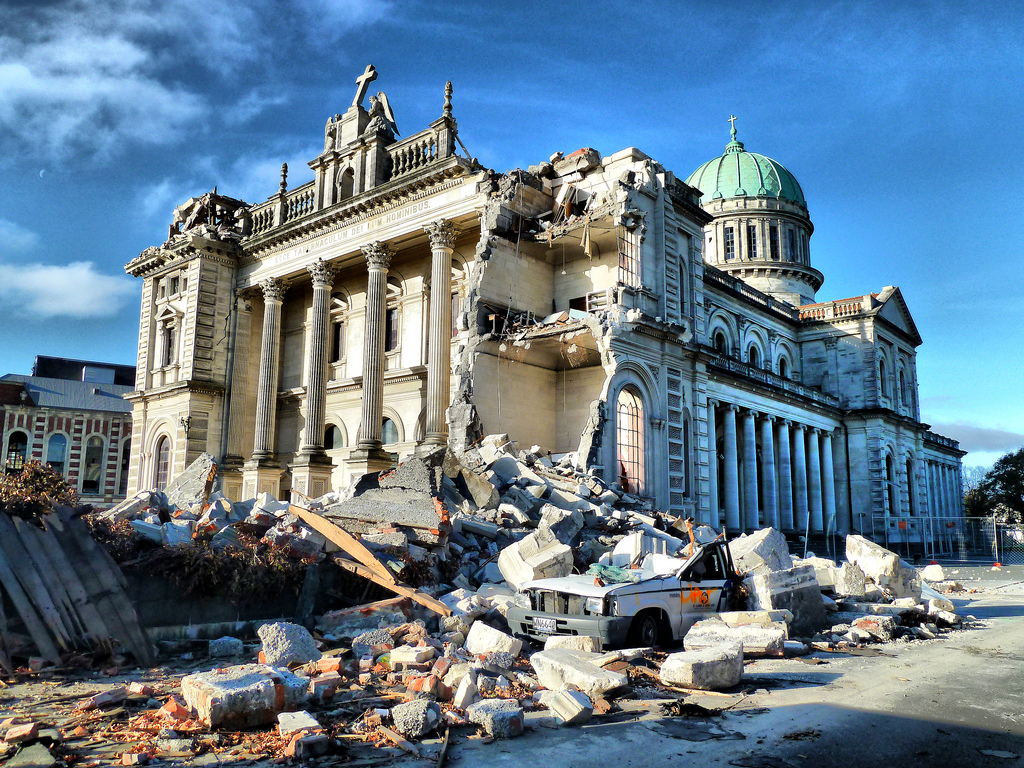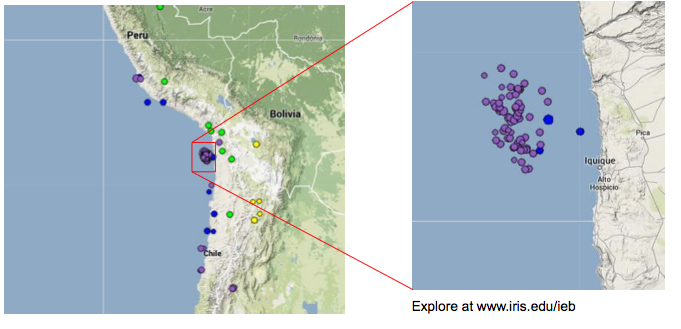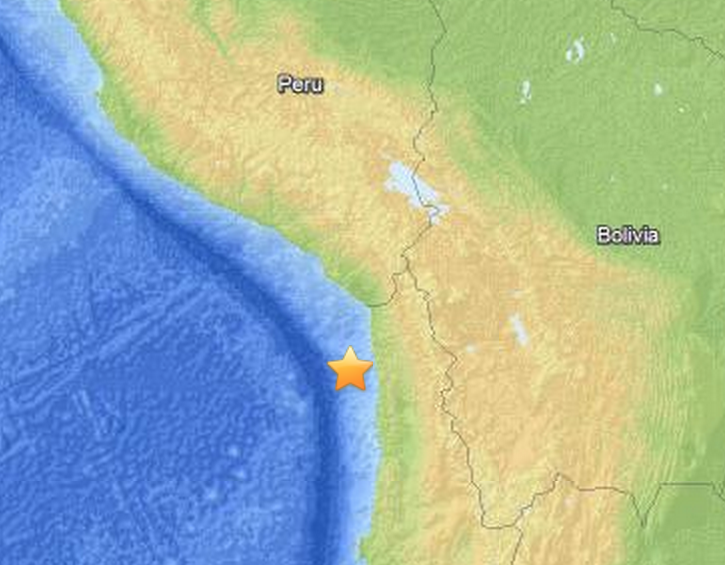
Migrating Earthquakes Could Make Prediction Possible

Whether it's moon phases, migrating bison or a particular type of weather, there are many ways people try to predict planetary catastrophes, such as earthquakes. None of these techniques actually work, but that doesn't stop armchair experts.
Ask a seismologist, however, and nearly all will say earthquake prediction is impossible. But two prominent researchers break the party line today (May 15) in an opinion piece published in the journal Science.
What's changed? Data from two big earthquakes — one that recently struck Chile, and Japan's 2011 monster — suggest it's possible to predict the largest quakes, the researchers say. [In Photos: This Millennium's Most Destructive Earthquakes]
The magnitude-8.1 terremoto (as Chileans say) offshore of Iquique, Chile, on April 1, followed about two weeks worth of smaller temblors that migrated along the fault toward its final breaking point. A similar pattern played out before the 2011 Tohoku earthquake in Japan, which measured magnitude 9.0.
"When the Chile earthquake happened, it was a bit of a jaw dropper for me," said Emily Brodsky, lead author of the Science Perspective and a seismologist at the University of California, Santa Cruz (UCSC). "What I took away from the whole experience was maybe my very deep, inbred cynicism [about predicting earthquakes] is unfounded."
When earthquakes come in bunches
Tracking swarms of earthquakes crawling along a fault could provide advance warning before damaging earthquakes strike, wrote Brodsky and her co-author Thorne Lay, also a UCSC seismologist.
Sign up for the Live Science daily newsletter now
Get the world’s most fascinating discoveries delivered straight to your inbox.

But these kinds of swarms aren't isolated to Chile and Japan, and other scientists who watched the sequences play out are far from convinced. Researchers face one big hurdle in figuring out how to distinguish between foreshocks (earthquakes that lead to bigger quakes) and everyday earthquake clusters.
"The relevant question is: How many times did similar clusters of small quakes occur without a big quake following, and the answer is hundreds or thousands of times more often," said Robert Geller, a geophysicist at the University of Tokyo. "These authors are unjustifiably using the word 'prediction,' which should be reserved for data that would make it a real possibility to issue alarms," Geller said in an email interview.
Brodsky and Lay agree that it's hard to determine what is actually a foreshock. But they argue that the results from the Tohoku and Chile earthquakes are tantalizing enough to warrant investment in offshore seismic networks that could provide real-time data and potentially solve the problem. [In Pictures: Japan Earthquake & Tsunami]
"Distinct foreshock sequences before really big earthquakes have been observed a few times now, and that means we should take them seriously," Brodsky told Live Science's Our Amazing Planet.
Most countries view installing permanent seafloor seismometers as prohibitively expensive. Research ships to deploy the sensors don't come cheaply, and the monitors themselves require thousands of miles of cable and surface buoys to transmit data to shore. Adding a couple thousand seafloor stations could cost upwards of $1 billion, based on recent attempts. But whether or not such networks can predict earthquakes, scientists would love to see better offshore monitoring.
"There is a need to carry out more studies in subduction zones, because these regions remain largely unexplored," said Sergio Barrientos, director of the Seismological Service of the University of Chile, who led the national response to the recent earthquake swarm. Subduction zones, where two tectonic plates collide, unleash the most powerful earthquakes on the planet.
Prediction vs. forecast
Of course, scientists already provide earthquake warnings, but they don't use the "p-word." Rather, they call it earthquake forecasting, which gives the probability of an earthquake in a certain time period. In the United States, official forecasts often cover 30 years, because it's the average length of a home mortgage.

The difference between predictions and forecasts can be explained with a coin toss: Flip a coin, and call heads or tails. That's a prediction. But estimate how often you will land on heads or tails in the next five minutes? That's a forecast. Weather analogies can also help explain the difference. An earthquake prediction has a location and a date, like saying it will rain tomorrow in New York City. An earthquake forecast, on the other hand, is like saying there's a 30 percent chance of showers in the next five days.
Part of what makes earthquake forecasting successful is that it relies on geologic context, such as looking at where earthquakes happened in the past. Brodsky and Lay said such context is important to cases like Tohoku and Chile. Both earthquakes ruptured parts of faults that were what scientists called locked. No large earthquakes had occurred in either site for more than a century.
Combining similar geologic detective work with better offshore networks could finally lead to earthquake prediction, Brodsky and Lay said.
And that's where some researchers agree that progress is possible. "We may never get to the sort of deterministic prediction that some people think of as earthquake prediction," said Jeff McGuire, a geophysicist at the Woods Hole Oceanographic Institution in Woods Hole, Massachusetts. "However, I think in some tectonic regions, we are not that far from being able to make defensible statements about significant probability increases over time-scales of hours to weeks before the big earthquake happens."
Email Becky Oskin or follow her @beckyoskin. Follow us @OAPlanet, Facebook and Google+. Original article at Live Science's Our Amazing Planet.











